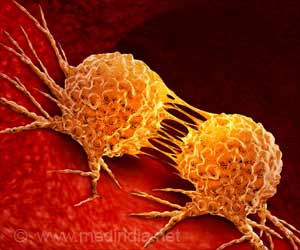As many cancers are the product of uncontrolled cell division, researchers have increasingly focused a lot of attention on the hippo pathway, which when malfunctioning results in irregular activity of a pair of its downstream targets, the Yes-associated protein (YAP) and transcriptional co-activator with PDZ binding motif (TAZ). YAP/TAZ act to regulate the transcription of genes (copying their information from DNA form to RNA form) that are involved in cell proliferation. When the Hippo signalling pathway is active, YAP is inhibited, thus playing a role in control of tumor suppression. On the other hand, when Hippo signaling is inactive, YAP becomes persistently active and promotes cell proliferation.
But the precise mechanisms of YAP/TAZ activation remains poorly understood. It is known that the gene that encodes epidermal growth factor receptor (EGFR), a protein that helps cells grow, is often over-activated, especially in head and neck squamous cell carcinoma (HNSCC), and EGFR is often mutated and activated in lung adenocarcinoma (LUAC).
As a result, EGFR is a common target of anti-cancer therapies, either using kinase inhibitor drugs, or blocking antibodies. Yet here too, whether EGFR controls YAP/TAZ activation has been an open question.
“EGFR fails to reduce phosphorylation of YAP in some cellular systems, but inhibits the Hippo pathway to activate YAP in others,” said Toshinori Ando, a main researcher working on the study and Assistant Professor at the Center of Oral Clinical Examination at Hiroshima University Hospital (with a cross-appointment as a post-doctoral scientist in the University of California, San Diego). “If EGFR is being targeted by therapeutics, we really should know a bit more about why we’re doing this.”
So the researchers carried out a series of investigations of Hippo pathway mechanisms, including via comparisons of EGFR gene activation (expression) and activation of YAP in a series of HNSCC cancer cells; cells that showed the most expression of EGFR amongst HNSCC cells; an analysis of all cancer types; and gene set enrichment analysis (GSEA)a technique of identifying groups of genes that are over-represented within a large set and may be associated with certain diseases.
They found that EGFR activation promotes tyrosine phosphorylation of one of the core Hippo pathway components, called MOB1. This is a gene that directs activation of particular kinases, LATS1 and LATS2, which modulate the function of the YAP/TAZ. The EGFR-promoted MOB1 tyrosine phosphorylation followed by LATS1/2 inactivation leads to aberrant YAP/TAZ activation in many cancers harboring EGFR alterations such as HNSCC and LUAC.
“Emerging evidence have shown that YAP is overexpressed and contributes to cancer growth, poor prognosis, and acquired resistance to EGFR-targeted drugs in HNSCC and LUAC, although the mechanism of YAP re-activation is unclear,” added J. Silvio Gutkind, lead researcher of this project and Professor at the University of California, San Diego.
This EGFR-MOB1-YAP/TAZ signaling axis may represent a novel target for cancer therapies. In addition, a combination of EGFR targeting therapy and YAP/TAZ targeting therapy could prevent cancer cells from acquiring resistance that might have occurred if just one or the other therapies were used on their own.
The researchers consider the development of such a drug to be an urgent priority as well as to clarify the unknown mechanism of YAP re-activation.
Source: Eurekalert



